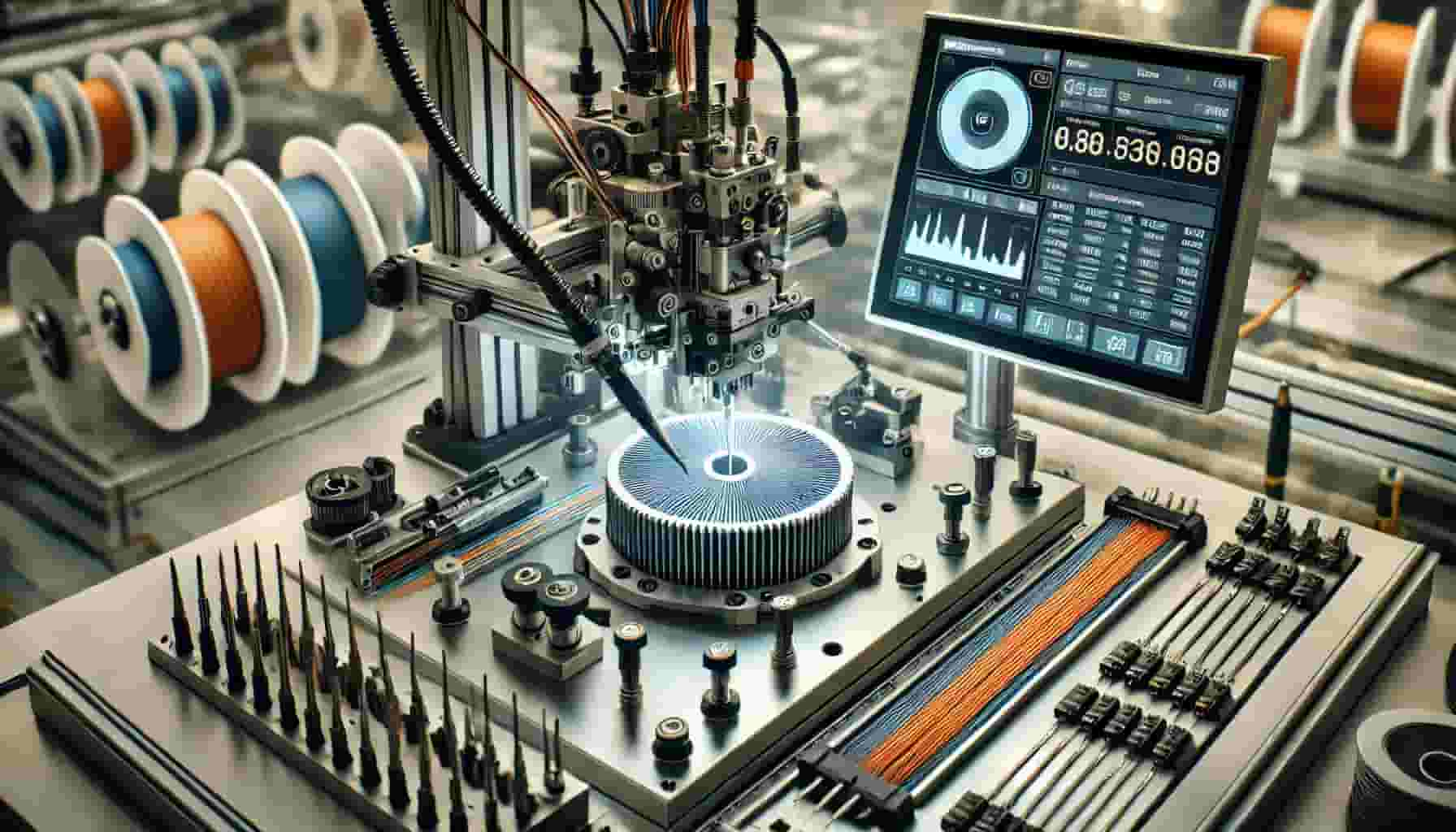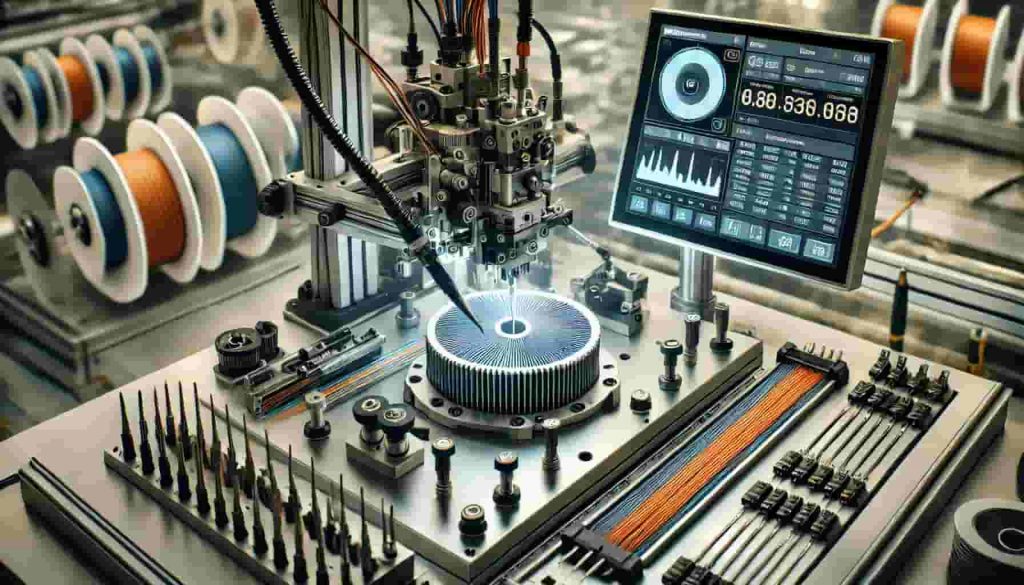In today’s fast-paced manufacturing environment, optimizing processes is crucial for maintaining a competitive edge. Wire harness assembly, a cornerstone of numerous industries, is no exception. Enhancing efficiency in this area is key to meeting market demands while ensuring the reliability of your final products. In this blog, we’ll explore practical strategies to streamline wire harness assembly, offering insights into how you can improve overall efficiency and productivity.

As a leading wire harness manufacturer, Konnra understands the challenges and complexities that come with organizing and connecting wires. We know that these tasks can be time-consuming and prone to errors, which is why we’re committed to providing solutions that help overcome these obstacles. Whether you’re dealing with high-volume production or custom configurations, the strategies discussed here will equip you with actionable steps to significantly enhance your assembly process.
1. What is Wire Harness Assembly?
Wire harness assembly refers to the process of organizing, bundling, and securing multiple wires or cables into a single unit. This unit connects various electronic components within a system, ensuring the efficient transmission of electrical signals or power. A wire harness is typically used in complex systems such as automotive, aerospace, and industrial machinery, where a large number of wires need to be managed efficiently.
The assembly process includes cutting wires to specific lengths, stripping insulation, crimping terminals, and grouping the wires into bundles that are then wrapped, tied, or secured using cable ties, sleeves, or other protective coverings. The final product is a neatly organized harness that can be easily installed into the target system.
Wire harnesses are essential for reducing installation time, improving safety by minimizing loose wires, and enhancing the durability of the wiring system by protecting the wires from environmental factors like moisture, heat, and abrasion.
2. The Importance of Wire Harness Assembly
The importance of wire harness assembly cannot be overstated, as it plays a crucial role in the functionality and reliability of electronic systems across various industries.
Critical Role in Manufacturing:
Wire harnesses are integral to the operation of many electrical and electronic devices. They provide the necessary connections between components, enabling them to work together seamlessly. In automotive manufacturing, for example, wire harnesses connect everything from the engine control unit to the lights, sensors, and infotainment system. The complexity of modern vehicles requires reliable and well-organized wire harnesses to ensure safe and efficient operation.
Applications Across Industries:
Wire harnesses are not limited to automotive applications. They are also used extensively in aerospace, where the reliability of electrical connections is critical for safety. In industrial machinery, wire harnesses ensure that motors, sensors, and control systems communicate effectively. In consumer electronics, they help organize the internal wiring of devices such as computers and home appliances, improving both functionality and aesthetics.
The efficiency and quality of wire harness assembly directly impact the overall performance of the system in which they are installed. A well-assembled wire harness can reduce maintenance needs, improve the durability of the system, and enhance the user experience.
3. Challenges in Wire Harness Assembly
Despite its importance, wire harness assembly presents several challenges that can affect efficiency and productivity.
Complexity and Customization:
One of the primary challenges in wire harness assembly is the complexity of the wiring arrangements. Each wire harness must be customized to fit the specific requirements of the system it will be used in. This often involves creating unique designs, selecting the appropriate materials, and ensuring that the harness can handle the electrical load it will carry. Wiring harness machining customization is crucial in addressing these challenges, enabling manufacturers to tailor harnesses to precise specifications while maintaining high efficiency.
Time-Consuming Processes:
The assembly process is often time-consuming due to the need for precision in cutting, stripping, crimping, and routing wires. Each step must be performed with care to avoid errors that could lead to system failures or safety hazards. The manual nature of many assembly tasks also makes the process labor-intensive, adding to the overall production time.
Error-Prone Manual Assembly:
Manual assembly of wire harnesses is susceptible to human error. Mistakes such as incorrect wire placement, poor crimping, or insufficient insulation can lead to defective products. These errors may not be immediately apparent, resulting in costly rework or field failures. Ensuring consistency and accuracy in manual assembly is a significant challenge that must be addressed to maintain high-quality standards.
4. Automation in Wire Harness Assembly
Automation is one of the most effective strategies for boosting efficiency in wire harness assembly.
Benefits of Automation:
Automating repetitive and labor-intensive tasks in wire harness assembly can significantly reduce production time and costs. Automated machines can perform tasks such as wire cutting, stripping, and crimping with greater speed and precision than manual methods. This not only improves efficiency but also enhances the consistency and quality of the assembled harnesses.
Examples of Automated Solutions:
Modern wire harness assembly lines often incorporate various automated tools and machines, including:
Automated Crimping Machines: These machines precisely crimp terminals onto wires, ensuring a secure and reliable connection.
Wire Cutting and Stripping Machines: These machines can cut and strip wires to exact lengths and specifications, reducing the potential for errors and waste.
Robotic Arms: Used for complex tasks such as inserting wires into connectors or routing them through tight spaces, robotic arms increase accuracy and reduce the physical strain on workers.
Impact on Efficiency and Quality:
Automation not only speeds up the assembly process but also reduces the likelihood of errors. By minimizing manual intervention, automated systems ensure that each wire harness is assembled to the same high standards. This consistency is particularly important in industries such as automotive and aerospace, where reliability and safety are paramount.
5. Quality Control Measures to Prevent Assembly Errors
Quality control is essential in wire harness assembly to ensure that each harness meets the required specifications and standards.
Importance of Quality Control:
Effective quality control processes help detect and address defects before the harnesses are integrated into the final product. This prevents costly rework and reduces the risk of system failures in the field. Quality control also ensures compliance with industry standards and regulations, which is critical for maintaining customer trust and avoiding legal issues.
Best Practices for Quality Control:
Implementing rigorous quality control measures at each stage of the assembly process is crucial. Some best practices include:
Continuity Testing: Ensures that all electrical connections within the harness are correctly made and that there are no open circuits.
Visual Inspections: Trained inspectors examine each harness for defects such as poor crimping, incorrect wire routing, or damaged insulation.
Automated Testing Systems: These systems can quickly test the electrical performance of a harness, checking for issues such as short circuits, incorrect pinouts, and insulation resistance.
Integrating Quality Control into the Assembly Line:
Quality control should be integrated into the assembly process rather than treated as a separate step. This can be achieved by incorporating inline testing stations and automated inspection systems into the production line. By catching errors early, these measures help maintain high production throughput while ensuring that each harness meets the required standards.
6. Training and Workforce Development for Efficient Assembly
A skilled and well-trained workforce is essential for efficient wire harness assembly.
The Role of Skilled Labor:
Even with the increasing use of automation, skilled labor remains a critical component of wire harness assembly. Workers need to understand the intricacies of wiring, be able to interpret complex diagrams, and perform tasks that may not yet be fully automatable. Skilled workers are also better equipped to identify potential issues and make adjustments during assembly, ensuring that the final product meets all specifications.
Training Programs and Certifications:
Investing in training programs and certifications for assembly workers is a key strategy for maintaining efficiency and quality. Training should cover the latest assembly techniques, safety protocols, and the use of automated tools and machinery. Certification programs, such as those offered by IPC (Institute for Printed Circuits), can also help ensure that workers meet industry standards.
Workforce Optimization Strategies:
To maximize efficiency, manufacturers should consider strategies such as cross-training employees to perform multiple roles on the assembly line. This increases flexibility and allows the workforce to adapt to changing production demands. Implementing continuous improvement programs can also help identify inefficiencies in the assembly process and provide opportunities for workers to contribute ideas for improvements.
Conclusion
Wire harness assembly is a critical process that directly impacts the performance and reliability of electronic systems across various industries. By addressing the challenges of this complex process and implementing strategies like automation, rigorous quality control, and workforce development, manufacturers can significantly enhance their efficiency and productivity.
As technology advances, embracing automation and investing in skilled labor will be essential for maintaining a competitive edge in the market. By adopting these strategies, manufacturers can not only optimize their current operations but also position themselves for future growth and success.
To learn more about how to enhance your wire harness assembly process and explore customized solutions, visit Konnra. Our team of experts is ready to help you take your manufacturing efficiency to the next level. Discover the innovative tools and techniques that can transform your production line and keep you ahead in the competitive landscape.










